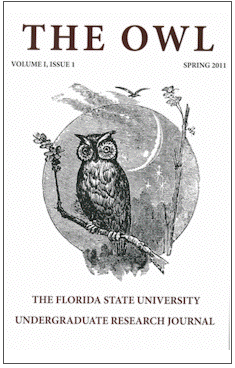A Simple Method for Characterizing Iridescence
Palabras clave:
iridescence, electron microspopy, biologyResumen
Iridescence is the change in hue of a surface with varying angles of illumination and/or observation; it is generated by optical diffraction resulting from subwavelength features on the specimen’s surface.This form of structural coloration enhances various biological processes (e.g., mate selection, species recognition, defense, and photosynthesis) for a wide variety of animal and plant species.
The invention of the electron microscope is responsible for many of the major breakthroughs in the ultrastructural characterization of iridescence, and electron microscopy is among the most commonly cited methods used.2 The goal of this project is to present a simple method for characterizing iridescence that overcomes cost and portability limitations associated with commonly used methods.
Descargas
Publicado
Número
Sección
Licencia
All works published in The Owl are published under a Creative Commons Attribution, Non-Commercial, Share-Alike (CC-BY-NC-SA) license. The author retains copyright.

